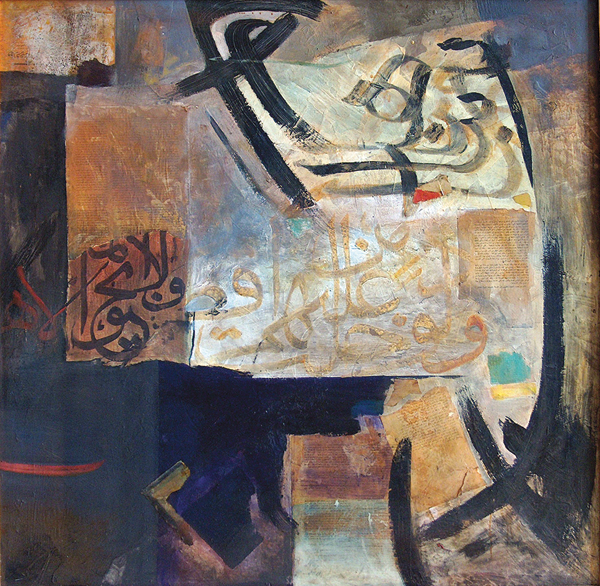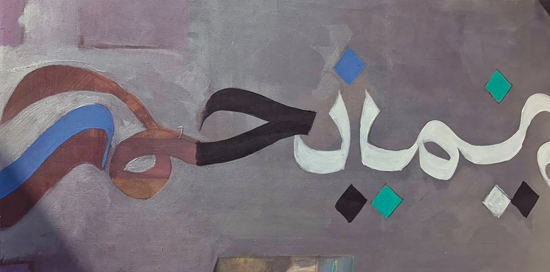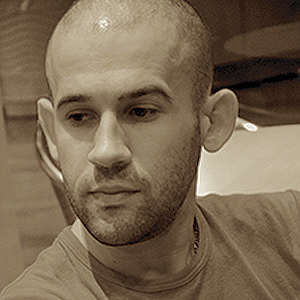Poetry has always been closely linked to Palestinians from all walks of life, irrespective of gender, social class, or level of education. It is part and parcel of happy and sad social occasions, even, for example, when the construction of a new house is complete or during harvest season, and has always been a means to express views on injustice, heroism, and pride. Various styles and genres such as Hadda, Ataba, Mejana, and Rozana can all be categorized under Zajal, which is the popular improvised oral poetry.

We can safely assume that contemporary Palestinian poetry started at the end of the nineteenth century, particularly as Palestinian journalism evolved, resulting in the development of the Arabic language after centuries of Ottoman rule and the introduction of new knowhow such as translation and literary critique, in addition to new literary genres such as the story, the novel, and theatre. During this era, newspapers also appeared that helped to spread information. The Sykes-Picot Agreement was signed during this time as well, which also saw the rise of social and political organizations that increased awareness and later struggled against the British Mandate. This struggle eventually continued against the Israeli occupation. As harsh as nationalistic poems were during this period, Palestinian poetry remained intertwined with issues of life and love.
As an interpretation of social and political turmoil, Palestinian poetry grew closer to Palestinian society. The year 1948 was a turning point in Palestinian literature due to the magnitude of the Nakba, the Catastrophe. Not only was Palestinian poetry used to express the anguish and pain, it was also a tool of resistance and a means to call people to remain steadfast. During this period, poets such as Abdel Kareem Al Carmi and Abdel Rahim Mahmoud became prominent. The latter was assassinated by the Zionists during a battle in defense of his homeland.
The post-Nakba period witnessed the rise of several prominent poets, including Ibrahim Touqan, Fadwa Touqan, Mahmoud Salim al-Hout, Salma Khadra Jayyusi, Harun Hashim Rashid, etc. Poetry during this period expressed both the tragedy of the Nakba as well as people’s hope and determination to return to the land that had been lost. With the start of the Palestinian revolution in 1965, and then the 1967 War, defiant resistance poetry took off and was mainly used to inspire and recruit. This continued until the start of the first Intifada when a large number of Palestinian poets emerged, such as Mahmoud Darwish, Tawfiq Zayyad, Samih al-Qasim, Muin Bseiso, Zakaria Mohammad, Ghassan Zaqtan, and many more. With an esthetic and artistic sense, these poets interpreted the dire circumstances of the Palestinian people and Palestinian land. They also laid the ground for Palestinian poetry to develop further, eventually distinguishing it within Arab literature and creating a revolution not yet witnessed in the arena of Arab literature. Palestinian poetry became a school that was followed by a large number of Arab poets who wrote about freedom, justice, and resistance.

It is worth mentioning that although the occupation played a major role in the emergence of resistance poetry, the fact that poets were forced to deal with the topic of occupation resulted in burdening Palestinian poetry with slogans that at times weren’t conducive to artistic poetic quality. The same is true, in fact, for other forms of Palestinian artistic expression.
A detour, if you will, took place with the signing of the Oslo Accords, when a good number of writers benefited from the foundations that were laid prior to this period. Palestinian prose poems became popular. Many wrote trochaic and classical poetry and then went on to write prose poems. Among them was Mahmoud Darwish who left his mark on both poetry and poets. As the second Intifada erupted in the year 2000, with the Internet becoming popular and the Peace Process crumbling, a new generation of writers emerged who used totally different narratives and images.
It seemed that as the third millennium started, a new consciousness and a new narrative developed. Using the Internet, writers who previously could not travel or communicate with the outside world were now able to do so. Whereas in former times the occupation directly controlled (prevented) access to books, everything now was available online. A new liberated, more open, and more artistically adventurous generation of writers surfaced that challenged the old ways and tools. Although the issues of occupation and loss of rights persisted, it appeared that these topics were pushed backstage to make room for personal perspectives and individual concerns. Prose poems became powerful and were characterized by the marginalized taking center stage and the questioning of reality from a narrow and petty perspective.
With blogs and social media becoming popular, in addition to the changing political scene as witnessed in the burial of the Peace Process, the general sense of disappointment, the loss of faith in authority, and the continuation of a brutal occupation, yet another generation of young writers of prose poems is emerging, although some have not yet published their writing. Bold and confrontational, this generation is quite active in magazines and literary websites. These young writers possess the right tools and are not ashamed to tackle sensitive issues or even taboos. More importantly, they fully realize that liberation of the mind is essential to national liberation and ending the occupation in order to lead a normal life like anyone else in the world.
This article is a humble attempt to synthesize contemporary Palestinian poetry, though the topic clearly deserves much more depth.
» Tarik Hamdan is a poet and a writer.


